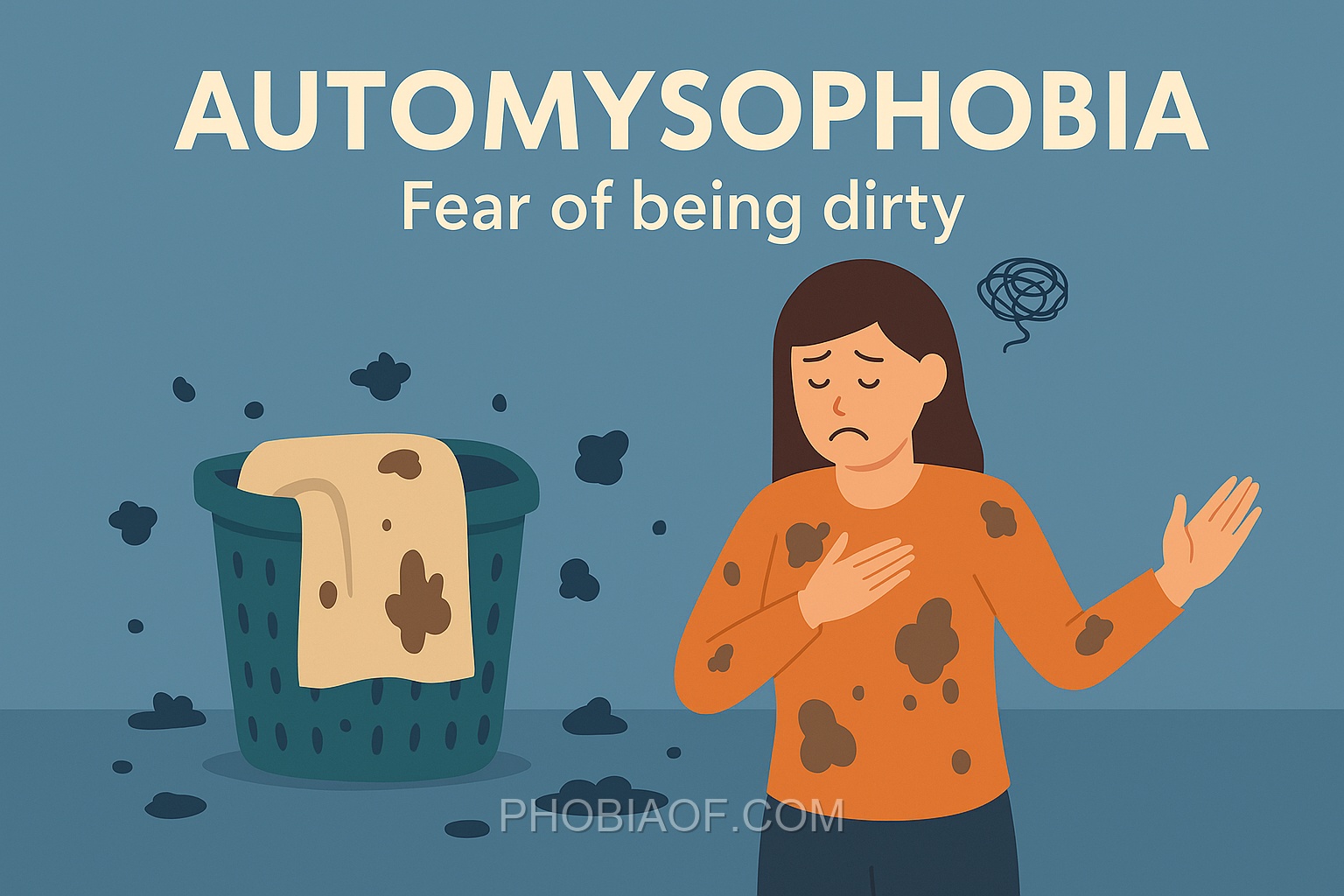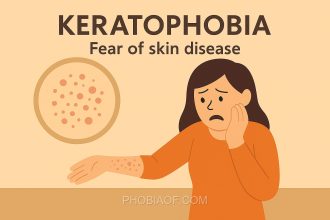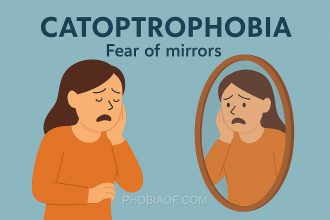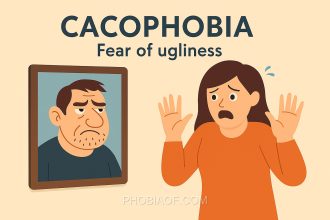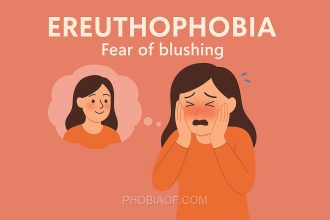Have you ever felt an overwhelming dread at the thought of being unclean, even when others assure you that you are spotless? This intense fear is a hallmark of Automysophobia, a condition that can significantly impact a person’s daily life.
Automysophobia, in simple terms, is the fear of being dirty or contaminated. The word originates from Greek: “auto” meaning “self,” “mysos” meaning “uncleanliness,” and “phobia” meaning “fear.” This phobia involves an anxiety that goes beyond normal concerns about cleanliness or hygiene, often leading to compulsive behaviors and emotional distress.
Those affected by Automysophobia may experience a range of symptoms that can interfere with their everyday activities. It often manifests as a persistent worry about germs, dirt, or perceived contamination, even when there is no actual threat. This can lead to behaviors such as excessive washing, avoiding certain places or activities, and significant anxiety when feeling unclean.
Understanding Automysophobia is crucial for providing support to those who live with this phobia. Like many fears, it is not simply a matter of willpower; it requires compassion, understanding, and sometimes professional help to manage effectively.
Causes of Automysophobia
Automysophobia, or the fear of being dirty, can stem from a variety of causes. Understanding these potential origins can provide insight into why someone might develop this specific fear.
- Genetic Predisposition: Like many other phobias, automysophobia can have a genetic component. If a family member has a history of anxiety disorders or specific phobias, there may be an increased likelihood of developing similar fears. This genetic predisposition suggests that some individuals have a natural susceptibility to anxiety-related conditions.
- Traumatic Experiences: A past traumatic event related to dirt or uncleanliness can trigger automysophobia. For instance, a distressing experience involving unsanitary conditions or a severe illness due to poor hygiene might lead to a persistent fear of being dirty.
- Learned Behavior: Observing and mimicking the behaviors of others, particularly during childhood, can also lead to the development of automysophobia. If a child grows up in an environment where they see caregivers or family members expressing anxiety about dirt and cleanliness, they may adopt similar fears.
- Psychological Factors: Some individuals might develop automysophobia as a manifestation of underlying anxiety or obsessive-compulsive tendencies. This phobia can be a symptom of a broader psychological issue where the fear of dirt becomes a focus of obsessive thoughts and compulsive behaviors.
- Environmental Factors: Cultural and societal norms regarding cleanliness can influence the development of this fear. In societies where cleanliness is highly emphasized, individuals might feel increased pressure to maintain certain standards, potentially leading to anxiety about being perceived as dirty.
While research into the specific causes of automysophobia is ongoing, these factors are commonly considered when examining why this fear arises. Understanding the combination of genetic, psychological, and environmental influences can help in developing effective strategies for managing and overcoming this phobia.
Symptoms of Automysophobia
Automysophobia, the intense fear of being dirty, can manifest in various distressing ways. Individuals experiencing this phobia often endure significant anxiety and fear, which can severely impact their quality of life. Here are some common symptoms:
Physical Symptoms:
- Panic attacks featuring shortness of breath, dizziness, or chest pain
- Excessive sweating, particularly when confronting situations perceived as dirty or unclean
- Rapid heartbeat and palpitations
- Shaking or trembling, especially when avoiding or escaping from perceived contamination
Emotional and Behavioral Symptoms:
- Overwhelming dread at the thought of becoming dirty
- Avoidance of situations or places where dirt might be present, such as public restrooms or outdoor activities
- Compulsive behaviors, such as excessive washing or cleaning routines
- Heightened irritability or distress in environments perceived as unclean
- Difficulty concentrating due to persistent thoughts about cleanliness and contamination
If severe, these symptoms can interfere with daily life, making it challenging to engage in everyday activities, maintain relationships, or perform work duties effectively.
Treatment for Fear of Being Dirty (Automysophobia)
Overcoming automysophobia, the fear of being dirty, is entirely possible with the right treatment and coping strategies. It’s important to remember that you are not alone, and this phobia can be managed successfully over time. With consistent effort and support, you can regain control and live a fulfilling life.
Here are some proven therapies and strategies that can help:
Therapies:
- Exposure Therapy: This technique involves gradually exposing yourself to situations or objects that trigger your fear. With the guidance of a professional, you’ll learn to face your fear in a controlled and safe environment, reducing its power over time.
- Cognitive-Behavioral Therapy (CBT): CBT focuses on identifying and changing negative thought patterns that contribute to your fear. By working with a therapist, you can develop healthier ways of thinking and reduce the anxiety associated with being dirty.
- Counseling: Speaking with a counselor or therapist can provide a supportive space to explore the underlying causes of your phobia and work towards overcoming it.
Self-Help Coping Techniques:
- Relaxation Exercises: Techniques such as deep breathing, progressive muscle relaxation, or yoga can help calm your mind and reduce anxiety.
- Meditation: Regular meditation practice can enhance mindfulness, helping you stay grounded and less reactive to fear-inducing thoughts or situations.
- Support Groups: Joining a support group allows you to connect with others who understand what you’re going through, offering mutual support and encouragement.
In severe cases, medication such as anti-anxiety drugs might be prescribed. However, focusing on therapy and developing coping skills is often more beneficial for long-term management of automysophobia.
If your fear of being dirty is interfering with your daily life, I encourage you to seek professional help. A mental health professional can provide tailored guidance and support, helping you on your journey to recovery.
Remember, taking the first step towards treatment is a significant achievement, and with perseverance, you can overcome this phobia.
Conclusion
Understanding automysophobia, the fear of being dirty, begins with recognizing its causes and symptoms. By gaining insight into the triggers and manifestations of this phobia, individuals can take the first crucial steps towards addressing and managing their fears. Awareness is a powerful tool that helps demystify the overwhelming emotions associated with automysophobia, making it easier to seek solutions.
It is important to remember that many people successfully overcome or manage their phobias with time and the right support. The journey towards coping with automysophobia can be a gradual process, but it is entirely achievable. Acknowledging the phobia and seeking help from mental health professionals or discussing concerns with a doctor can be a transformative step.
In closing, let this be an encouraging reminder that you are not alone, and there are resources and strategies available to help you navigate this challenge. Consider reaching out for therapy or professional support if you find it difficult to manage on your own. With patience, resilience, and appropriate guidance, you can work towards a life less constrained by fear, embracing a future with greater ease and comfort.
